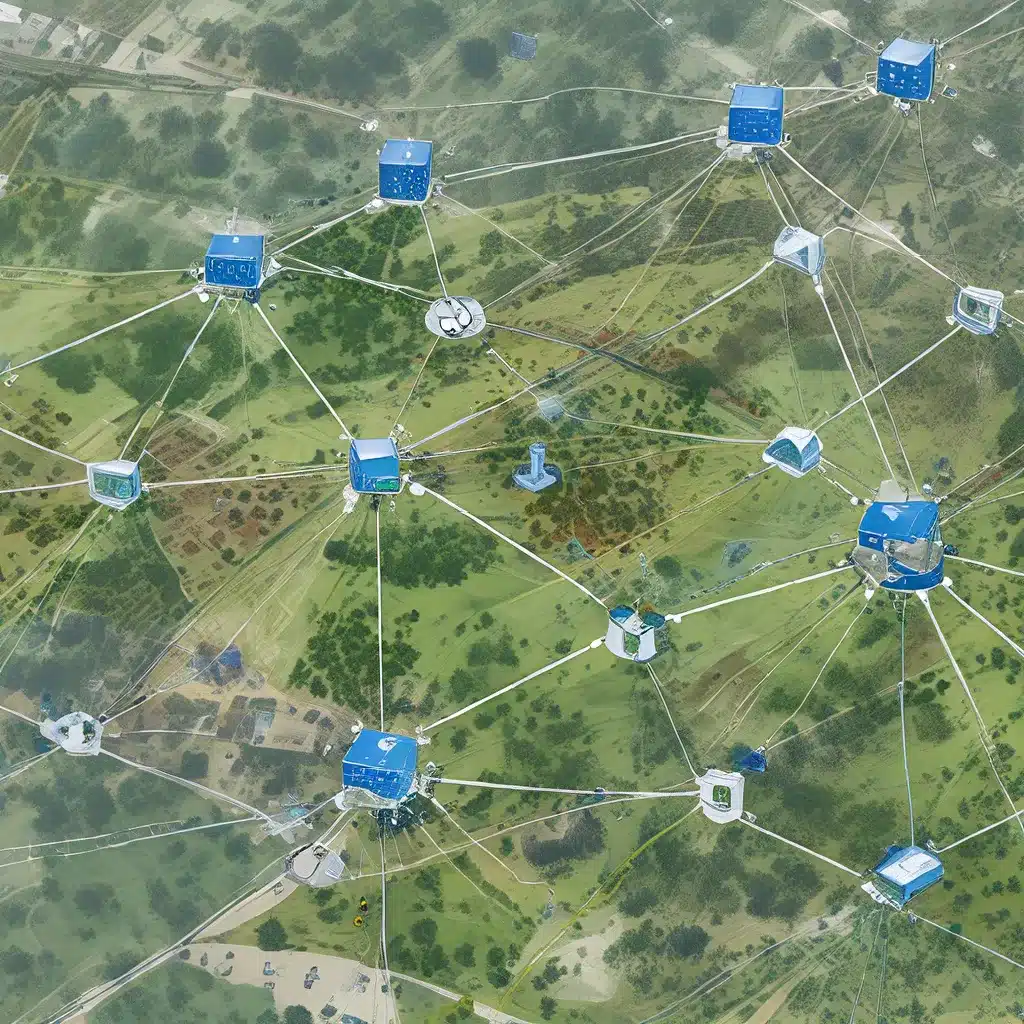
As the world becomes increasingly connected through the Internet of Things (IoT), the role of sensor networks has become pivotal in our understanding and management of various environmental systems. From monitoring air quality and greenhouse gas emissions to tracking the impact of climate change, these networks of sensors and devices have empowered us to collect, analyze, and respond to data on an unprecedented scale.
The Rise of Multi-Scale Sensor Networks
Sensor networks are no longer confined to a single scale or application; instead, they have evolved into multi-scale systems that integrate data from various sources and resolutions. This approach allows for a more holistic understanding of environmental processes, enabling researchers and policymakers to make informed decisions based on comprehensive and interconnected data.
One of the primary advantages of multi-scale sensor networks is their ability to capture insights at different levels of granularity. At the micro-scale, sensors can provide real-time monitoring of specific environmental parameters, such as air pollutant concentrations or soil moisture levels. At the macro-scale, satellite and remote sensing technologies can offer a broader, regional perspective on environmental trends and patterns.
By integrating these complementary data sources, multi-scale sensor networks can paint a more complete picture of environmental conditions, allowing for the development of accurate predictive models and the implementation of targeted mitigation strategies.
Sensor Network Applications in Environmental Monitoring
The applications of sensor networks in environmental monitoring are vast and diverse. One prominent example is air quality monitoring, where sensor arrays can be deployed across urban and rural areas to track the concentration of pollutants, such as particulate matter, nitrogen oxides, and volatile organic compounds. This data can then be used to identify sources of pollution, assess the effectiveness of emission control measures, and inform public health policies.
Another crucial application is the monitoring of greenhouse gas emissions, particularly from industrial sources and natural gas production. By deploying sensors at strategic locations, such as oil and gas facilities, coal mines, and landfills, researchers can quantify and mitigate the release of methane and other potent greenhouse gases, which play a significant role in climate change.
In the realm of water resource management, sensor networks can be used to monitor water quality, track the movement of pollutants, and manage water distribution systems. This information can help identify and address issues related to water scarcity, contamination, and ecosystem health.
Challenges and Considerations in Sensor Network Design
While the potential of sensor networks in environmental monitoring is immense, there are several challenges and considerations that must be addressed during the design and deployment of these systems.
Energy Management: Sensor nodes in remote or hard-to-access locations often rely on battery power, which can be a significant constraint. Innovative techniques, such as energy harvesting and power-efficient protocols, are being developed to extend the operational lifetime of these nodes and ensure continuous data collection.
Connectivity and Scalability: As sensor networks grow in size and complexity, ensuring reliable communication and data transmission becomes increasingly important. Wireless protocols, such as LoRaWAN and NB-IoT, have emerged as viable solutions, enabling long-range, low-power connectivity in IoT applications.
Sensor Calibration and Reliability: Maintaining the accuracy and reliability of sensor data is crucial for effective environmental monitoring. Strategies like sensor calibration, data validation, and sensor fusion are essential to ensure the integrity of the collected information.
Cybersecurity and Privacy: The proliferation of IoT devices and sensor networks has also raised concerns about cybersecurity and data privacy. Implementing robust encryption, access control, and anomaly detection measures is crucial to protect sensor networks from cyber threats and unauthorized access.
The Future of Multi-Scale Sensor Networks
As technology continues to evolve, the potential of multi-scale sensor networks in environmental monitoring and modeling is becoming increasingly apparent. In the coming years, we can expect to see the following advancements:
-
Improved Sensor Capabilities: The development of more sensitive, selective, and energy-efficient sensors will enhance the accuracy and reliability of environmental data collection.
-
Advanced Data Analytics: Machine learning and artificial intelligence algorithms will play a crucial role in the real-time analysis and predictive modeling of environmental data, enabling faster decision-making and more effective interventions.
-
Seamless Integration: The integration of sensor networks with other emerging technologies, such as autonomous vehicles, drones, and satellite imagery, will provide a more comprehensive and holistic understanding of environmental systems.
-
Collaborative Platforms: The creation of open-source and collaborative platforms for sharing sensor data and best practices will foster a global community of environmental researchers and practitioners, driving innovation and cross-pollination of ideas.
As we navigate the complexities of environmental challenges, the continued advancements in multi-scale sensor networks will be instrumental in our ability to monitor, understand, and manage the delicate balance of our natural world. By leveraging these powerful technological tools, we can make informed decisions, implement targeted interventions, and work towards a more sustainable future for all.